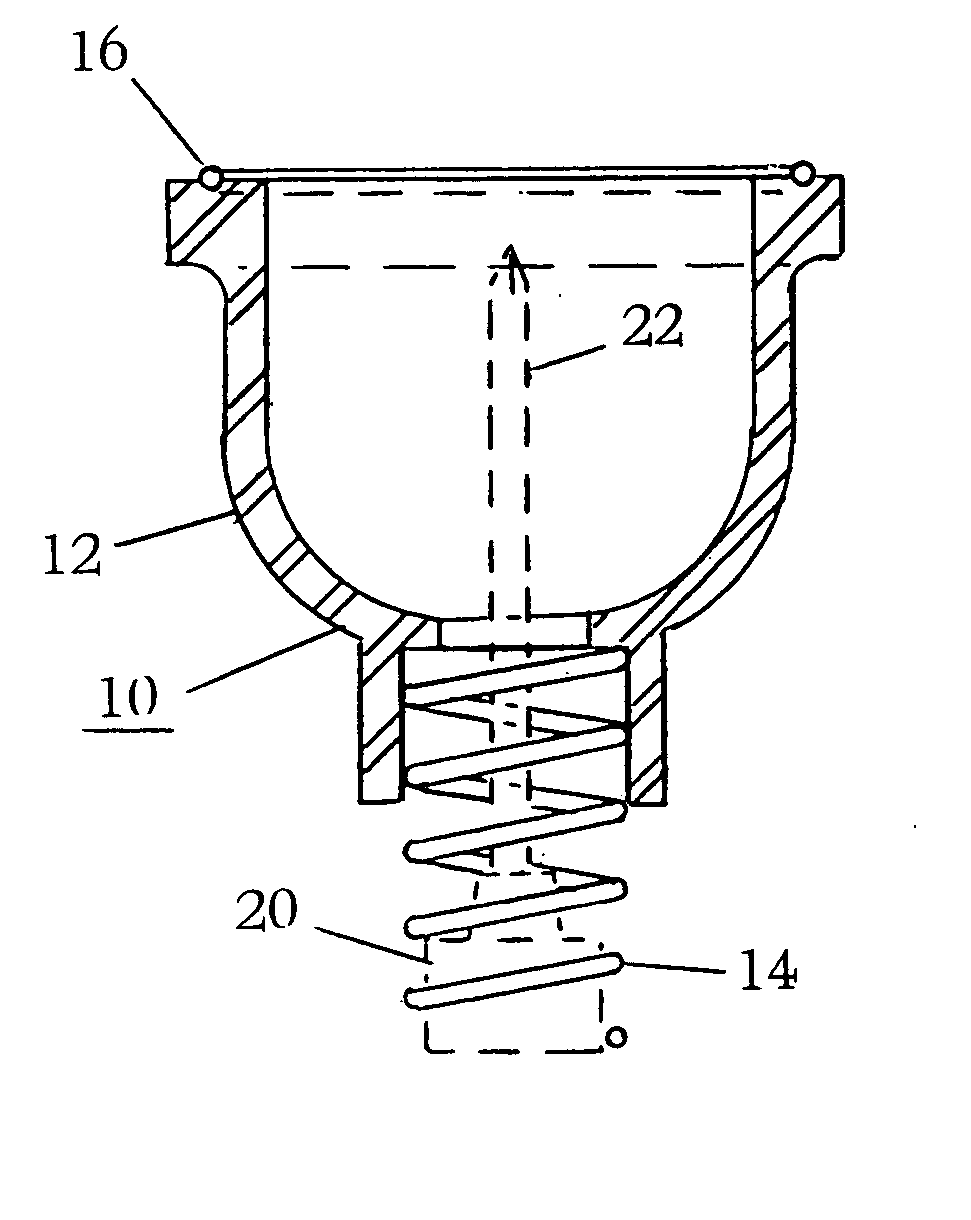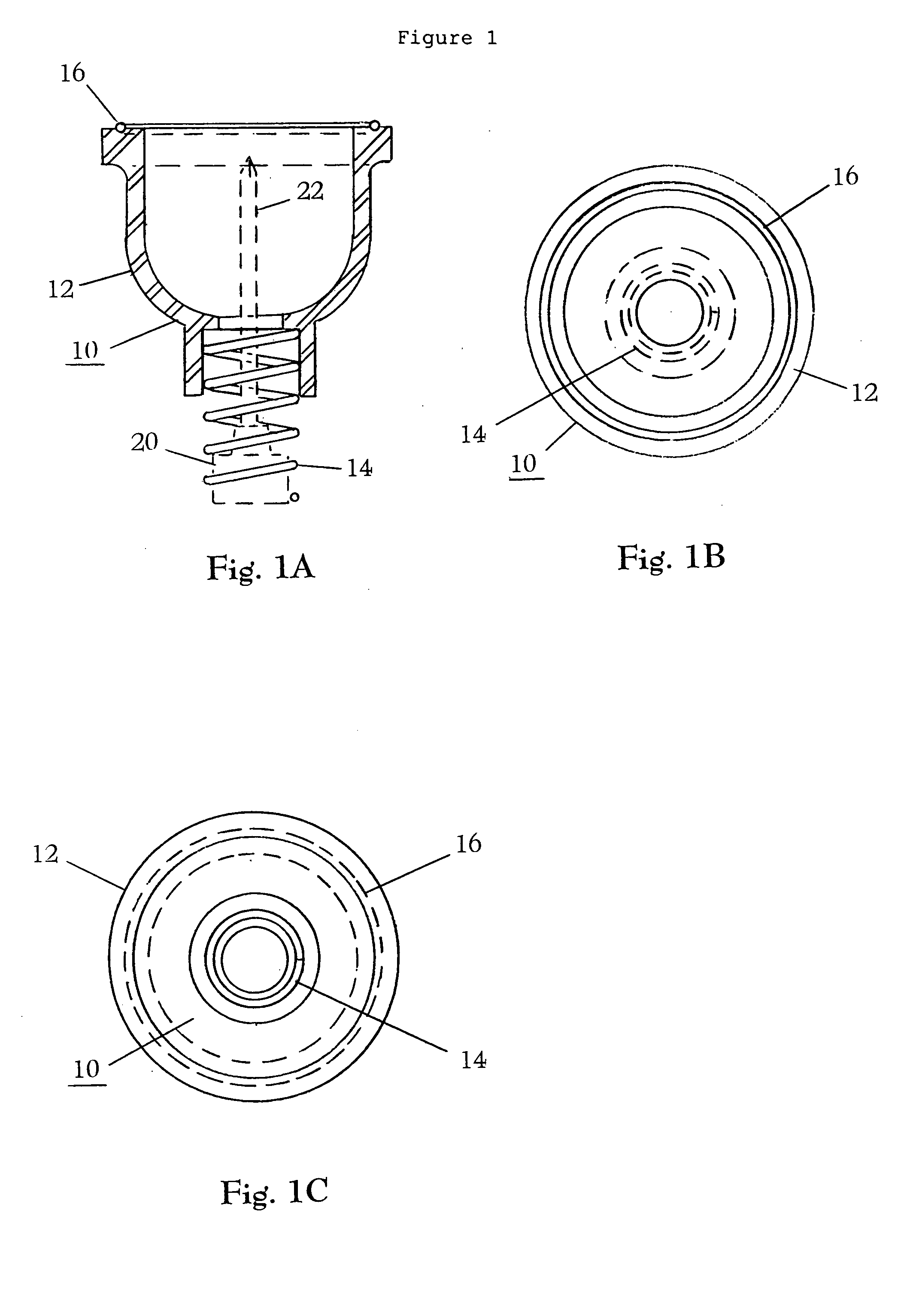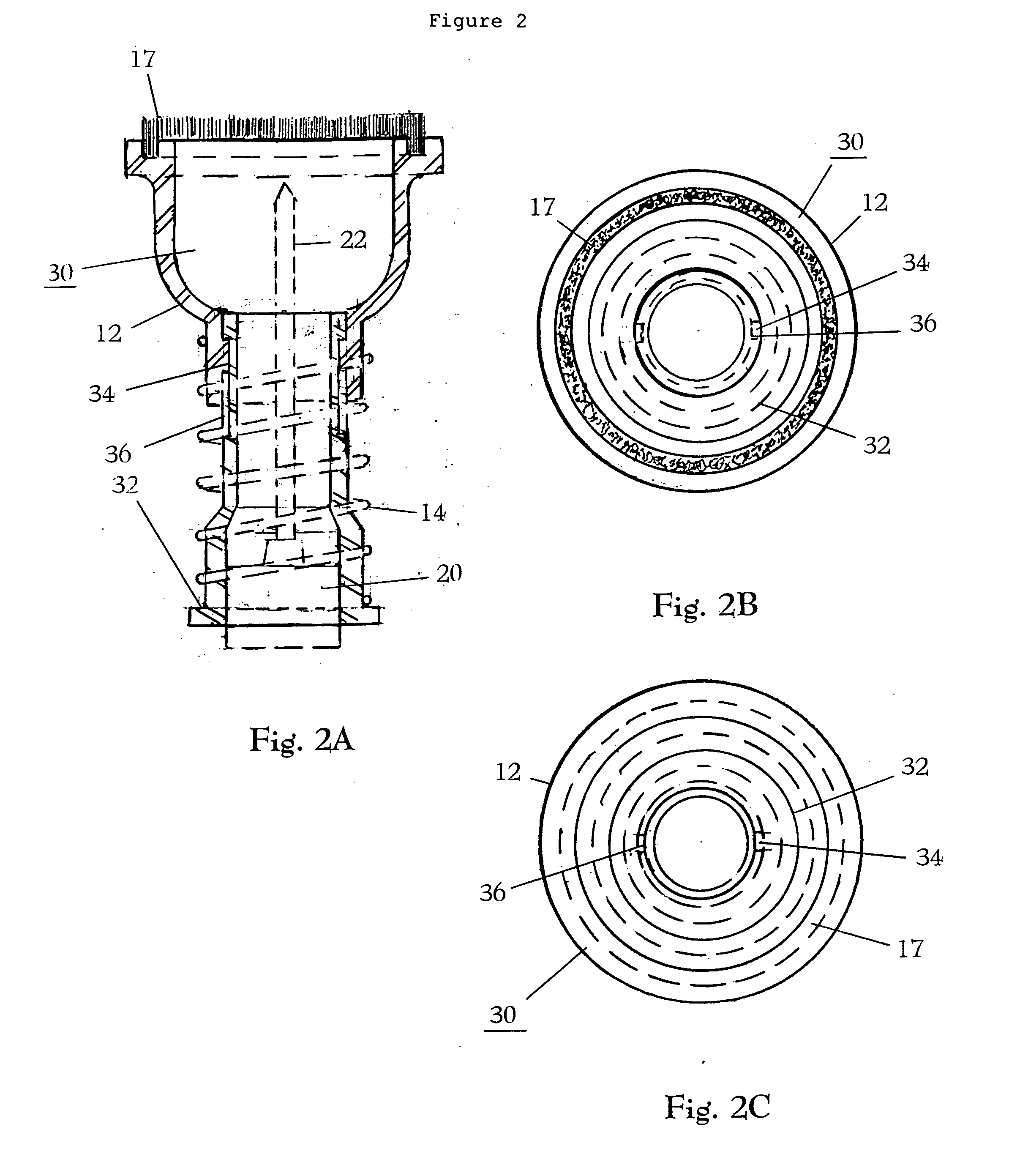Protective sheild for a tool
a protective sheath and tool technology, applied in the field of protective devices, can solve the problems of debris coming into contact with the operator, significant friction, and debris emitted during tooling operations, and achieve the effect of preventing injury from debris
- Summary
- Abstract
- Description
- Claims
- Application Information
AI Technical Summary
Benefits of technology
Problems solved by technology
Method used
Image
Examples
Embodiment Construction
[0020] Unless defined otherwise, all terms used herein have the same meaning as are commonly understood by one of skill in the art to which this invention belongs. All patents, patent applications and publications referred to throughout the disclosure herein are incorporated by reference in their entirety. In the event that there is a plurality of definitions for a term herein, those in this section prevail.
[0021] The term “debris” as used herein refers to particles emitted from the surface of a working material as a result of tooling or machining operations. Such debris may include for example shavings, burrs or chips.
[0022] The terms “operating”, “operation” or “operations” as used herein refers to the act of using a tool to alter the character of a working material such as by drilling a hole, cutting into a desired shape, or driving a screw into the surface or the like by methods known to one skilled in the art.
[0023] The term “working materials” as used herein refers to a var...
PUM
| Property | Measurement | Unit |
|---|---|---|
| Electrical resistance | aaaaa | aaaaa |
| Transparency | aaaaa | aaaaa |
| Light | aaaaa | aaaaa |
Abstract
Description
Claims
Application Information
 Login to View More
Login to View More - R&D
- Intellectual Property
- Life Sciences
- Materials
- Tech Scout
- Unparalleled Data Quality
- Higher Quality Content
- 60% Fewer Hallucinations
Browse by: Latest US Patents, China's latest patents, Technical Efficacy Thesaurus, Application Domain, Technology Topic, Popular Technical Reports.
© 2025 PatSnap. All rights reserved.Legal|Privacy policy|Modern Slavery Act Transparency Statement|Sitemap|About US| Contact US: help@patsnap.com



